Frequently asked questions here!
General questions
Why compost?
Composting your organic waste makes your bin lighter: it's practical and environmentally friendly because otherwise it is incinerated with other waste. It allows you to recover a resource: organic matter should always return to nature and thus perpetuate the cycle.
Will my friends and family make fun of me?
If they love you, they shouldn't make fun of you. Especially since: 1. it's not nice and 2. You are right. If this should happen, don't hesitate to share your concerns with us and we will be happy to suggest parades that will get everyone (or almost everyone) to agree.
What is the difference between compost and vermicompost?
Composting is a general term that includes different methods. Vermicompost is produced by specific worms, Eisenia fœtida in general but also Eisenia Hortensis and Dendrobaena veneta. This practice is particularly suitable for domestic use, both indoors and outdoors. In most of the large composters that can be installed in a garden, the worms come spontaneously and are therefore just as present and active as in a vermicomposter.
Do we have to have worms?
YES! In the composter flowerpot, this is essential because it is a vermicomposter. This process allows for complete composting of your waste, and the compost that comes out is usable as it is: it looks like compost, except that it is richer in nutrients.
Honestly, does it stink?
No, vermicomposting does not give off bad smells. Be sure to follow the list of things to put in and things to ban, and don't forget to bring in dry matter very regularly. A little note of "undergrowth" could even come out of it! Closed cap, in any case, no smell is guaranteed!
Is it dirty?
No, it's not dirty. You have to keep a touch of common sense though. Always wash your hands and those of your children after handling the compost.
What to do with the compost?
Vermicompost is the best natural fertilizer of all time. If you use your pot on a daily basis, you will need to harvest regularly, every 3 to 6 months (you must observe the maturity of the compost). The first harvest is usually done after 6 to 8 months. You can use it as an addition of soil in the flowerpot part (you will find that the level of soil on the flowerpot side decreases over time).
You can also use it to feed all the plants in your home, those of your neighbours, the trees in your yard or on the street. At worst, keep it in a bag for future generations who [as in Waterworld] will kill each other for a bit of dirt.
Questions about the plants to be installed
Which plant(s) can be installed in a compost flowerpot?
We offer a few ideas in our user guide but there is no exhaustive list. It is up to each person to experiment according to their desires, the positioning of their pot indoors or outdoors and their exposure. You simply need to find out about the plants before installing them: for example, most aromatics find it difficult to live for long periods indoors without a lamp.
Can I use my pot without putting a plant in it?
If you install potting soil in the plant part, you can start the vermicomposter. The plant is not essential for the operation of the composting flowerpot.
Can I install a plant without using the composter part?
Of course! Take the time you need to start the vermicomposter, you have to be reactive to receive the worms and be ready to install everything so no stress once the plant is installed, you have all the time you need to move on to installing the worms. Remember to water it!
Should I repot my plant?
Not necessarily because the pot is continuously supplied with nutrients. However, after several years and depending on the evolution of your plant, it may need a larger pot. Also, if you have installed annual plants (vegetables, some herbs, etc.), you will have to remove them anyway when they have wilted. Of course you can leave the soil to rest until you find something else, or wait until the sowing season to start again.
Help!
My pot arrived damaged or broken, what can I do?
Please contact us as soon as possible at contact@lestransfarmers.com.
I can't get rid of the midges
You are losing patience. Gnats have reproduced exponentially and you have neither the time nor the desire to take care of them.
-
- Recouvrez copieusement votre terreau de paillis (exemple paillis de chanvre de litière pour rongeurs)
- Couvrez de carton, arrêtez de l’alimenter,
- placez des pièges : pièges à glu jaune côté plante et dans le composteur, pièges à vinaigre à proximité de vos fenêtres et de vos fruits.
- Aspirez en ouvrant les bouchons de temps en temps.
- Si vous en avez la possibilité, mettez votre pot en extérieur et ils vous dérangeront beaucoup moins ! Les moucherons ne nuisent pas au fonctionnement du composteur. Cela vous permettra de ne pas vous en préoccuper pendant un moment, et selon le temps que vous avez devant vous, vous pouvez continuer à alimenter votre pot en n’oubliant surtout pas de recouvrir de carton à chaque apport. Si vous devez le rentrer bientôt, couvrez de carton et arrêtez de l’alimenter quelques temps, jusqu’à ce qu’il n’y ait plus de moucherons.
My plant is doing badly!
Now is the time to learn! We can't give you specific advice here because we don't know which plant has taken up residence in your pot. You should check the needs of your plant, for example on the internet. If you can't think of anything else to do and the situation gets worse, you should know that no one can control everything, and that death is part of life. If it ends up being left behind, collect yourself and don't let it get you down. Set up a new one following our recommendations in the guide.
Si vous avez peur de ne pas maitriser l’arrosage en ne sachant pas si le compost est suffisant, nous vous conseillons vivement d’installer un diffuseur d’eau / olla en terre cuite à côté d’elle. Ainsi, vous n’aurez qu’à veiller à ce qu’elle ait toujours de l’eau et vous serez assuré.e que l’arrosage est équilibré.
My worms are running away!
Cela est très rare dans notre système car les possibilités de sortie sont très limitées voire nulles ET avec les vers de compost Eisenia fetida que nous livrons qui sont plutôt casaniers. Il peut arriver que quelques vers s’échappent exceptionnellement sans que cela ne déstabilise le fonctionnement du composteur. Si vous les retrouvez vivants remettez les vite dans le composteur car ils ne peuvent pas vivre en dehors plus de quelques minutes, ils ont besoin d’humidité et se dessèchent très rapidement : c’est pour cela que vous les retrouverez dans un périmètre de 30cm autour du pot au plus loin, et certainement pas sous votre oreiller 😀
2 pistes pour expliquer une fuite potentielle :
- si les vers ne viennent pas de chez Transfarmers, il est possible qu’il ne s’agisse pas de la bonne espèce (certaines sont plus fugitives que d’autres). Dans ce cas, le phénomène est souvent passager et ne concerne qu’un petit nombre d’individus (en effet il y en a environ 500 au départ donc la perte de 10 ou 20 vers a peu d’impact sur la population générale.)
- si les vers sont bien les bons, cela peut être le signe d’un déséquilibre qui les pousse à fuir. Vous les retrouverez autour du pot, probablement tous secs car ils ne peuvent pas aller loin en dehors d’un milieu humide (pas toujours évident à identifier). À ce moment là, il suffit d’observer si le phénomène persiste et
vérifier l’état de son compost, le remuer doucement au besoin, ajouter de la matière sèche si trop humide ou l’arroser si trop sec.
My compost bin looks too dry/moist
If you put in a lot of dry matter, your compost may be too dry, which can be problematic for both the plant and the worms. If this is the case, you can water the plant and the moisture will be distributed throughout the pot. Check regularly and repeat the operation if necessary. The appearance of ants in a compost could be a sign that the environment is too dry.
Conversely, and more frequently, your compost may be too wet if you don't put in enough dry matter. Compost that is too wet is easily recognised (more "sticky", less structured and more smelly). Add a good amount of shredded paper / cardboard to balance this out.
My compost bin smells bad
It may be suffering from one of the problems mentioned above: presence of unwanted waste, too much humidity... Try to find its origin and act accordingly. If the situation does not improve, do not hesitate to contact us.
I have a problem and I can't find the answer here!
Vous pouvez nous poser vos questions ici contact@lestransfarmers.com
Orders and deliveries
Delivery of the compost flower pots is carried out by Chronopost. We recommend that you check your information (postal address, e-mail address and telephone number) in order to receive notifications. We have studied the packaging to protect the pot during transport, but as it is fragile, it is preferable to receive it at the first attempt in order to avoid unnecessary transport.
During shipment, a tracking number is communicated and offers the possibility to choose different delivery slots or to add information.
Before accepting the package, it is important to check its condition as far as possible (if the package makes a noise of broken dishes, this is not normal).
The worms are delivered separately, directly from our partner breeder. If the worms are ordered in a pot + worm pack, they will only be shipped on request using a promotional code that can be used on the site to give the user time to start their pot (allow 5 to 7 days for delivery).
For any problem or request for information write to us at contact@lestransfarmers.com
Good practices
What am I allowed to put in my pot or not?
As a general rule, only waste of plant origin is deposited. You can throw away all your peels, cores, raw fruit and vegetable scraps, tea bags, coffee grounds, etc., but you should avoid them:
- citrus fruits
- garlic and onion and leek
You can cut the thicker fruit and vegetable peels into small pieces, so that they will be better assimilated. However, we do not recommend mixing the peels, as this would make a porridge that would release too much water too quickly.
The addition of bread or baked or seasoned products should be avoided as this can create a nuisance.
For a good balance and a successful compost, it is essential to add dry matter regularly, ideally at each addition and cut into small pieces:
- rolls of toilet paper
- handkerchiefs, used paper / paper towels
- corrugated cardboard (shipping cartons)
- food cardboard
If necessary, the compost can be stirred from time to time with a large stick to aerate it and distribute the dry matter. This is necessary if the compost has become too moist and smelly: add a good amount of cardboard and stir.
Finally, if you eat eggs, you can let the shells dry in a special container and then grind them into powder before feeding them to your worms: they love them and the compost will be even better. This balances the PH of your compost.
How much waste can I put in the compost bin?
At full capacity, 1.5 to 2 litres of rubbish can be thrown away per week. Of course, experts will be able to improve the yield by cutting everything into small pieces or by harvesting the compost more often, for example.
I'm going on holiday, what can I do?
Faites seulement en sorte que le pot soit un minimum rempli d’épluchures, dans un endroit qui ne risque pas la canicule ni le grand froid (autant pour votre plante que pour vos vers). Vous pouvez partir tranquillement 4 à 5 semaines. Si vous avez une plante qui nécessite un arrosage régulier, pensez à installer une olla dans votre pot !
Care and life of the composting flowerpot
How do I clean my pot?
Votre pot en activité va se métamorphoser au cours du temps. Des motifs vont apparaître, sa couleur va changer, évoluer. Si une partie de ces empreintes restera à jamais, il est possible de nettoyer l’extérieur régulièrement du pot pour en prendre soin, et éviter les accumulations de sels minéraux qui peuvent abimer la terre cuite en cristallisant.
Les pots sont traités à l’huile de lin par nos soins, afin de protéger la terre cuite et ralentir les apparitions de salpêtre et de blanchiment. Ce traitement peut être appliqué à nouveau selon le souhait de son utilisateur 1 à 2 fois par an (appliquer un peu d’huile sur le chiffon sec et frotter toute la surface de la terre cuite). L’huile de lin est un produit naturel facile à trouver dans le commerce.
Pour un entretien régulier : à sec, utilisez un chiffon pour frotter gentiment sa surface et enlever les particules (terre, poussières, salpêtre) qui s’y déposent. Utilisez ensuite un vaporisateur pour arroser généreusement d’eau (avec un peu de vinaigre d’alcool dilué en option) régulièrement sur la surface de la terre cuite avant d’essuyer à nouveau.
Pour les marques d’origine extérieure plus coriaces (l’enfant qui a dessiné dessus, la trace de chaussure de celui qui a négligemment buté dedans), mouillez un torchon et frottez avec en option un peu de vinaigre blanc.
If nothing works and you make stains worse than you erase them, learn to put things into perspective: it doesn't matter, it's life, and that's what makes you as unique as your pot.
How to avoid midges
There are several types of midges that may bother you, the three main ones being the following:
Sciarids (or soil flies): small black flies that often flutter around houseplants. They like to lay their eggs in damp soil.
Drosophila (fruit flies, vinegar flies): small orange flies with red eyes and good reflexes. They are attracted by sweet matter that ferments to lay their eggs.
Psychodidae (sink flies): Less common, they like drains. Hard to miss them with their Batman-like appearance!
Their objective is to conquer the world and their method is always the same: to make children who will make children who will make children. From generation to generation, their life is all about laying eggs, eating and reproducing.
Midges begin their existence in eggs that develop into tiny larvae and feed on decaying material. They then develop into adult midges ready to reproduce. After laying their eggs, they die quickly to make way for the next generation. In addition to being fast, their cycle is very prolific (one adult lays between 50 and 300 eggs).
How to avoid them?
If midges appear in your compost bin, it is probably because eggs have been introduced into it with the waste you have thrown in.
The first preventive measure is therefore to avoid introducing (almost invisible) midge eggs or midges into the compost bin.
To do this:
- Leave the compost bin plugs closed.
- Cover or store your fruit and vegetables to prevent a gnat from laying on its skin (fruit bell / airy cupboard or pantry / fridge...).
- Do not leave your compostable waste lying around after cooking and put it quickly in the compost bin.
- If you use an intermediate storage container in your kitchen, make sure that it is "fly-proof" but not completely airtight, otherwise the waste may pre-ferment. Cover it with a gauze or cloth for example.
- Put cardboard cut-outs or paper after each waste supply. This balances the compost and hinders the fly that would like to access the waste.
Be alert for any signs of wing flapping. Apply the above tips to avoid climbing and invasion.
Your potting soil on the plant side becomes interesting for sciarids if it is moist on the surface. Do not hesitate to keep this surface dry for a long time at the first signs of flies. The composting flowerpot can largely do without watering for several weeks.
How to get rid of them?
What might appear to be a small attack can degenerate in a few days from 3 gnats to hundreds. It is therefore important to prepare in advance, just in case.
Prepare yourself mentally for not being able to use your compost bin for a few weeks while the invasion is contained.
Get the essential tools proposed in the following lines.
Once the offensive is launched, you must set traps for your opponent and block his natural cycle. Two actions combined give good results, preventing gnats from laying eggs and killing them. To do this, here is our advice:
- Former une barrière physique
Recouvrez les déchets de papier/carton en petits morceaux ou bien de litière type copeaux de bois ou chanvre sur 10 cm.
- Pailler le terreau de votre plante (la litière de copeaux ou de chanvre est parfaite)
- Placer des pièges
Le piège le plus efficace pour les moucherons du fruit consiste à remplir le tiers d’un verre de vinaigre de cidre mélangé avec une goutte de produit vaisselle ou de savon. À disposer en différents endroits stratégiques comme la cuisine, à proximité du composteur ou même à poser dedans (attention à ne pas le verser, ce qui pourrait avoir l’effet inverse en attirant les moucherons).
L’autre piège pour prévenir les moucherons de type sciaride est le piège à glu autocollant jaune. À placer dans le composteur, du côté de la plante et où bon vous semble sans attendre dès la moindre apparition. Il permettra d’attraper les adultes et ainsi éviter qu’ils ne viennent se multiplier dans le composteur.
- To evacuate the midges from the composter
Do this regularly, the less midges, the less they will reproduce. When inside, use your vacuum cleaner, open the composter and suck the midges that come out. When outside, you can just open the bid to let them out, this method is cruelty free!
- Do not feed the compost bin for at least 3 weeks.
In any case be patient and repeat the evacuation operation until no more midges escape, or even a little more. Then you can reuse the composting part of your pot, always taking care to put a layer of paper / cardboard after each feeding.
Making the compost flowerpot
How and where are the pots made and assembled?
The pots are handmade of natural terracotta near Troyes in France. The clay is poured into a mould, the extracted piece must then dry for several days before being fired in the kiln. We then apply a linseed oil treatment to each pot to protect the terracotta.
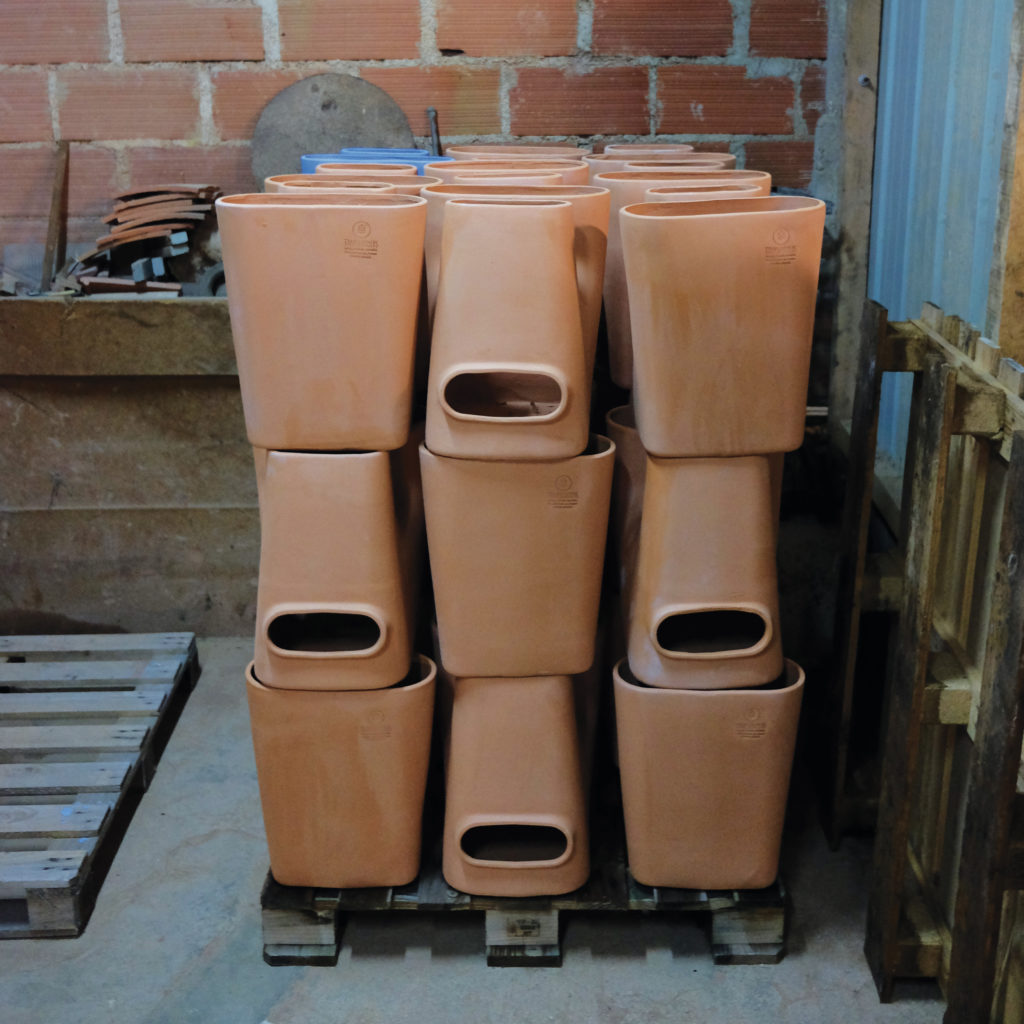
The corks are made of cork in a factory in Portugal, grooved by ourselves in Montpellier in order to fit a silicone seal made in France.
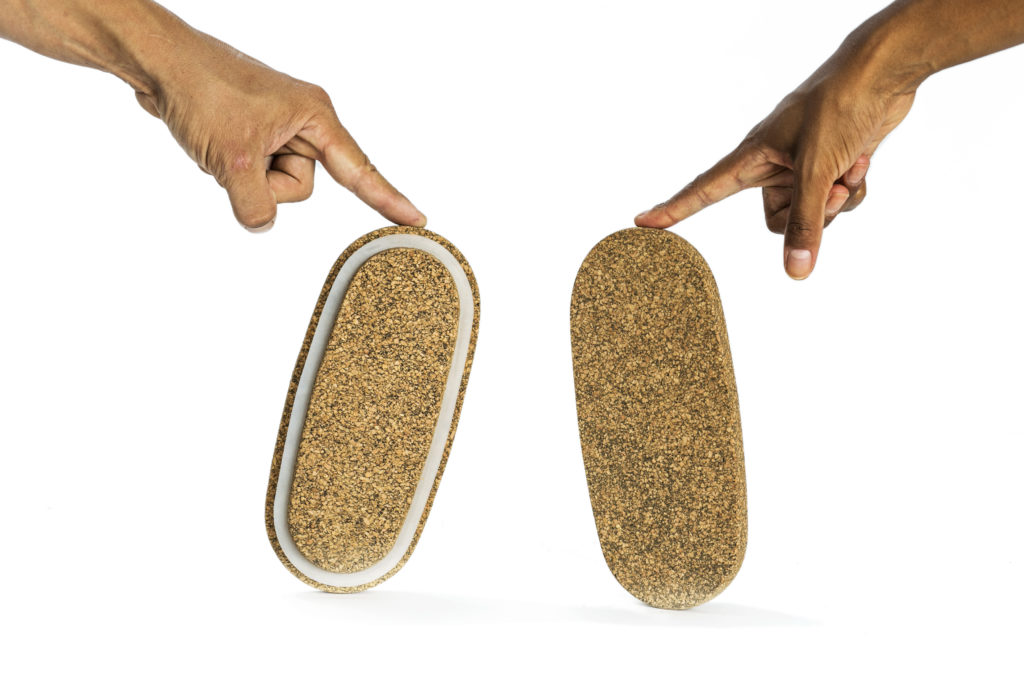
The inner wall is made in France from industrial plastic scrap. Colours may vary according to the mix 🙂
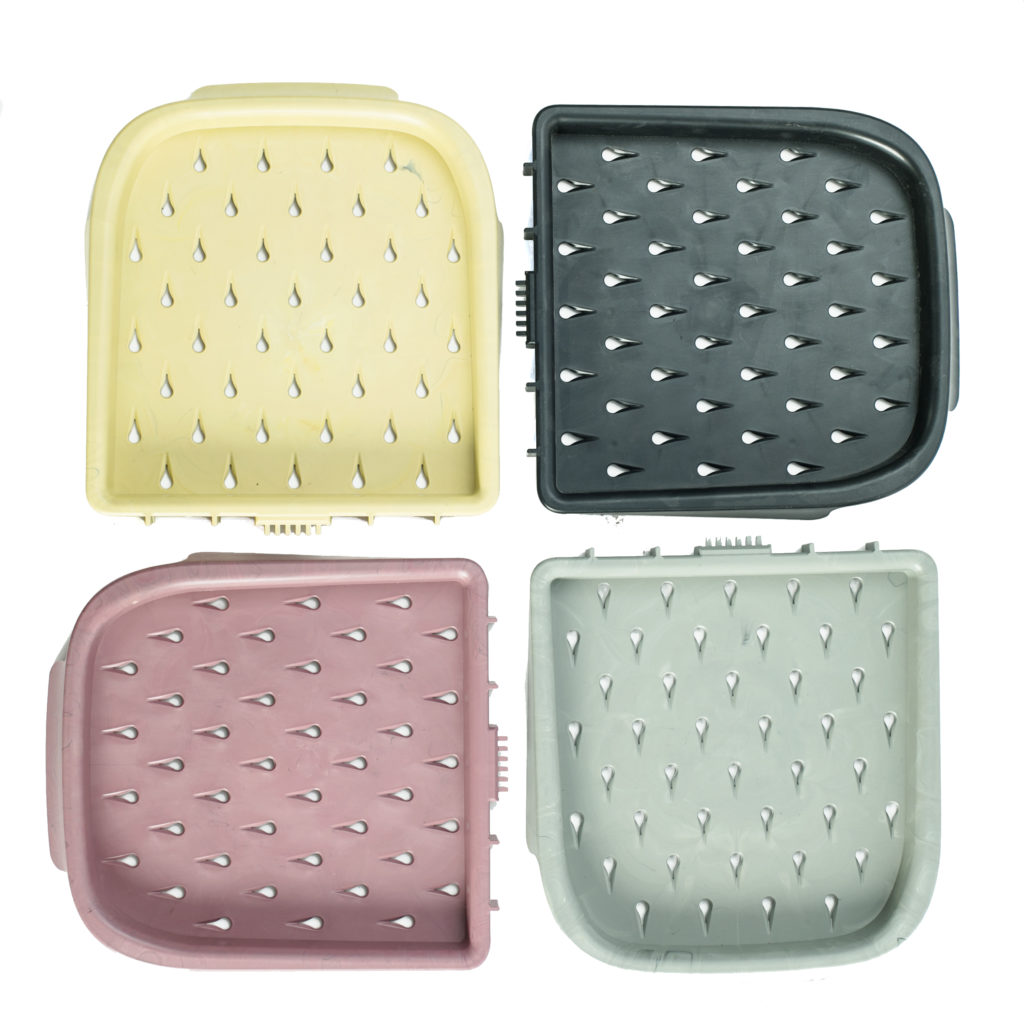
The tray is also made in France from paper covered with a thin layer of melamine for waterproofing.
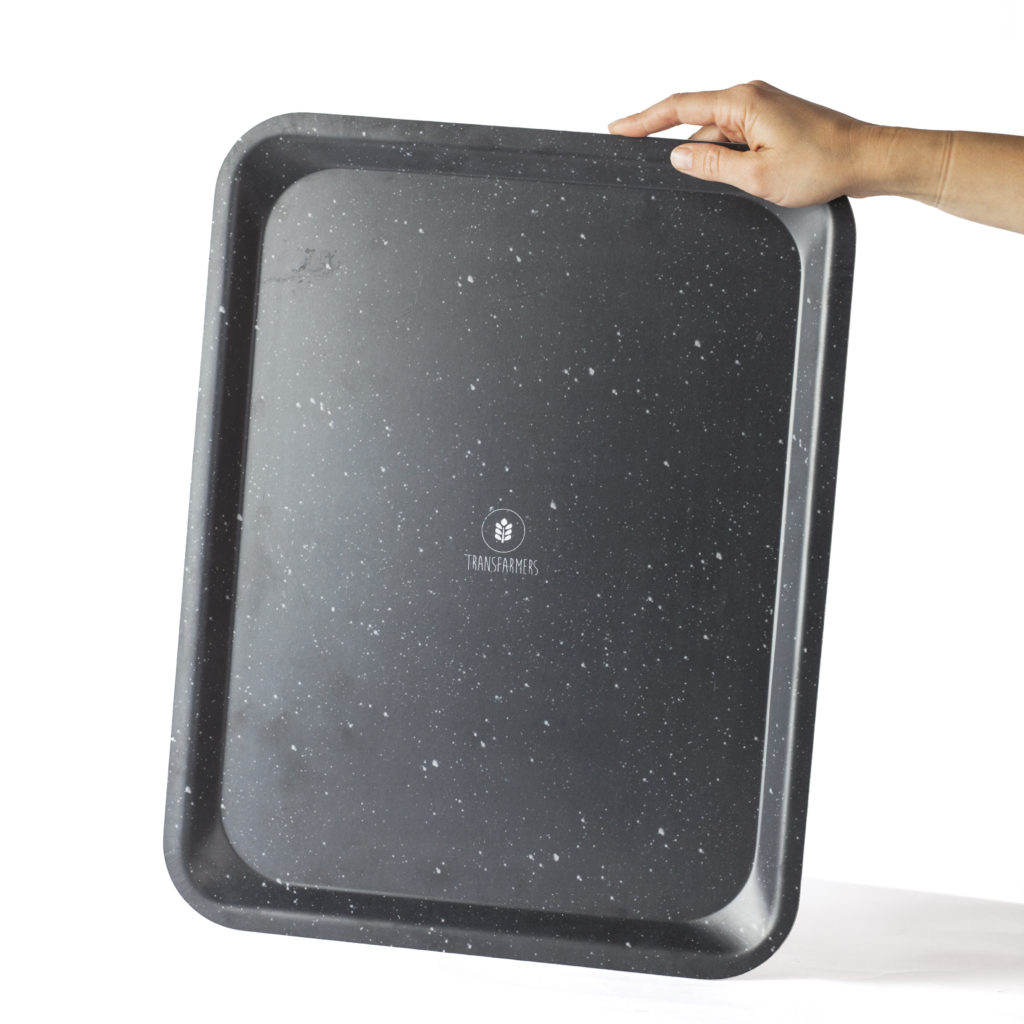
The guide, illustrated by Chloé Kast is printed in France on recycled paper with vegetable-based inks.
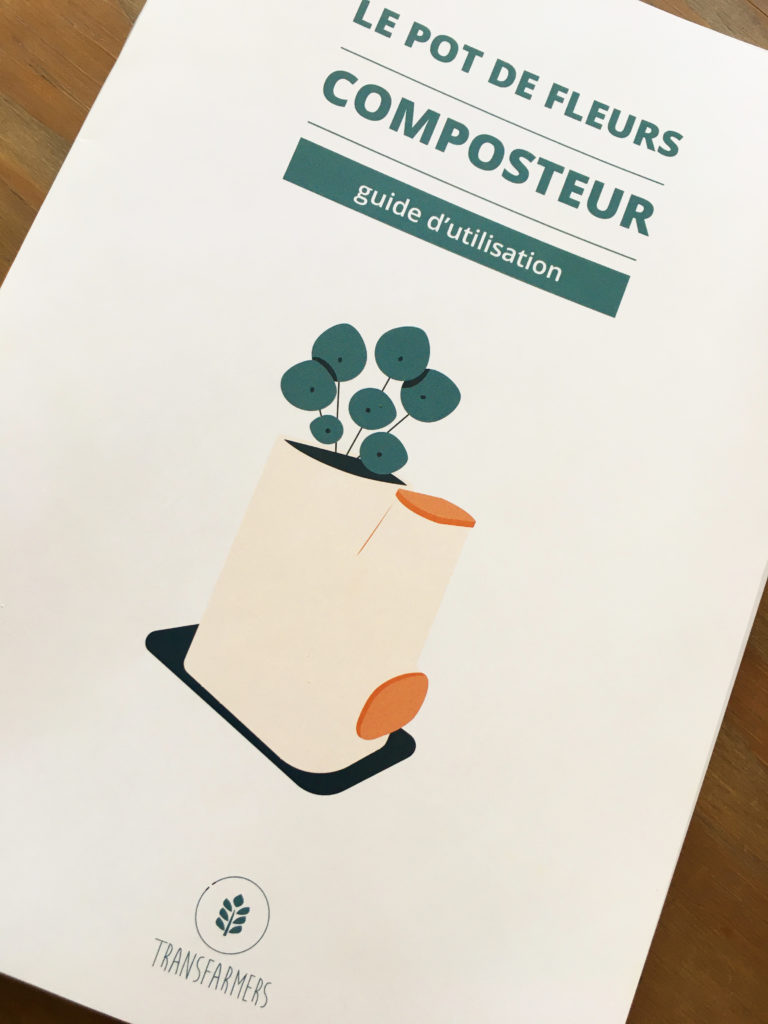
Everything is assembled and then shipped from Montpellier!

